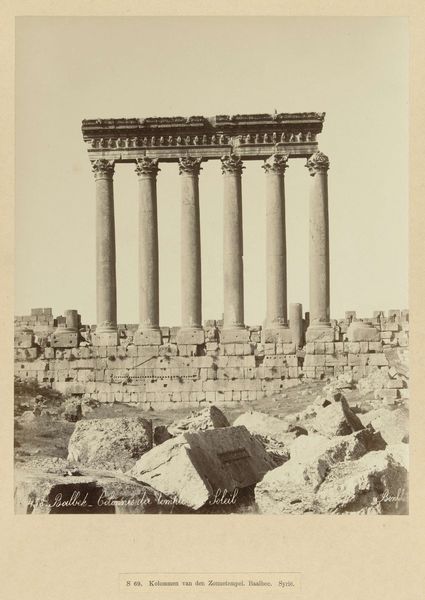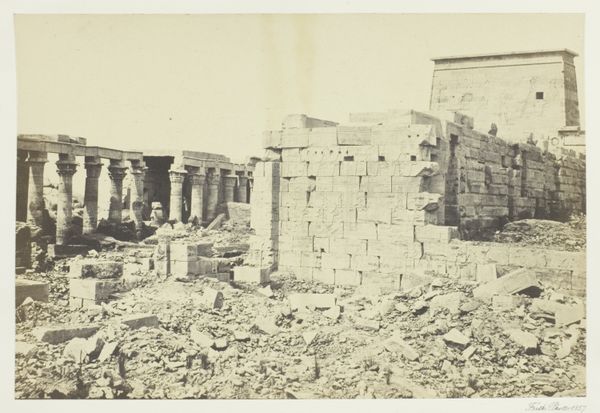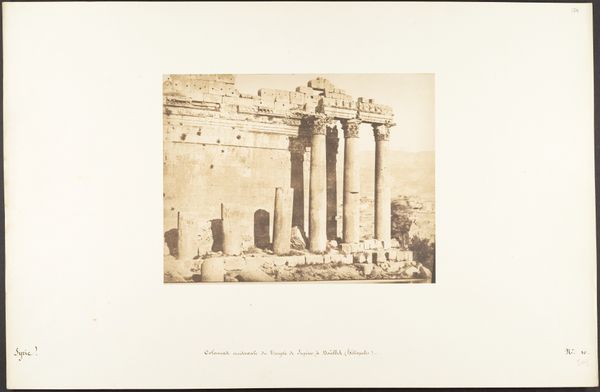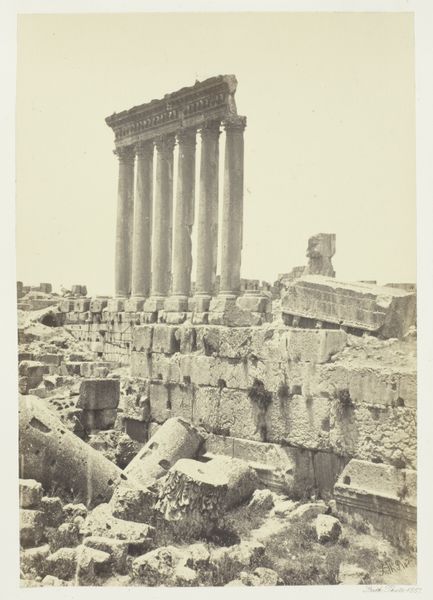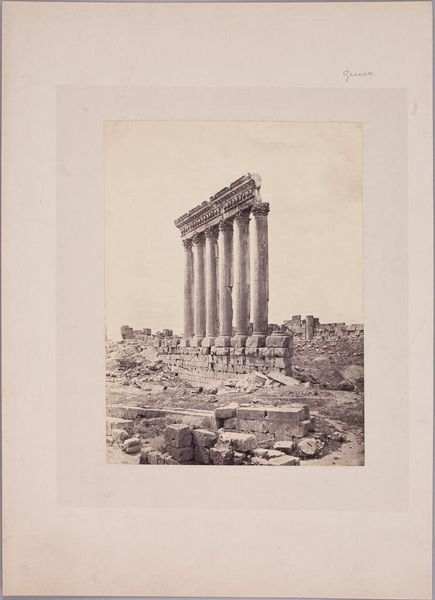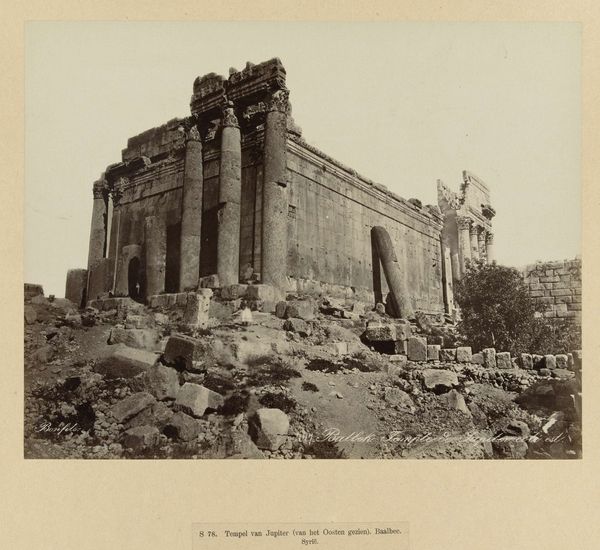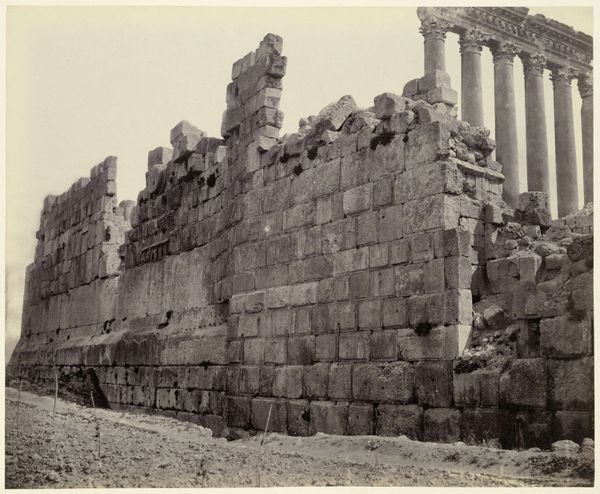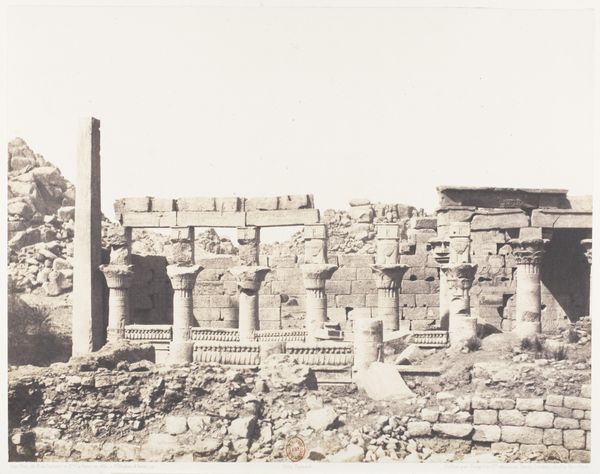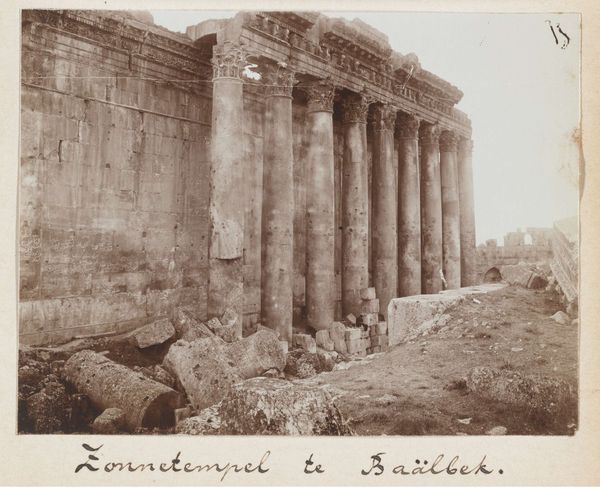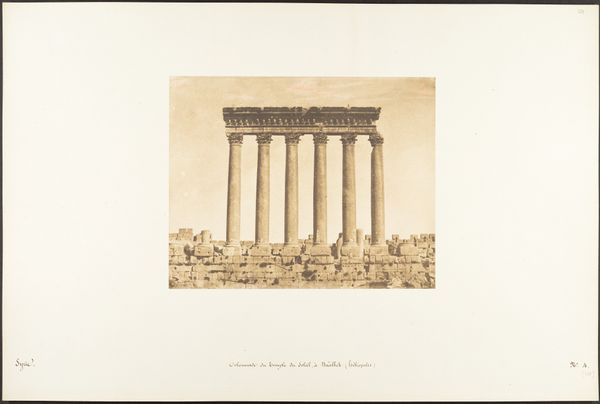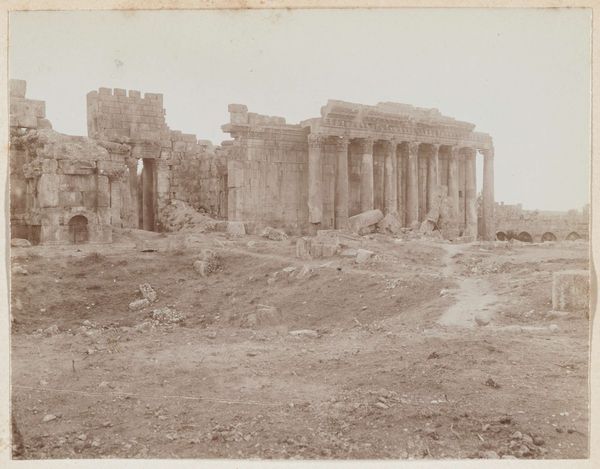
Vue générale des ruines de Baâlbek, prise à l'Est 1850
0:00
0:00
daguerreotype, photography, architecture
#
natural tone
#
landscape
#
daguerreotype
#
photography
#
ancient-mediterranean
#
column
#
romanticism
#
arch
#
architecture
Dimensions: Image: 16.2 × 21.7 cm (6 3/8 × 8 9/16 in.) Mount: 12 5/8 × 18 1/2 in. (32 × 47 cm)
Copyright: Public Domain
Curator: This is Maxime Du Camp's "Vue générale des ruines de Baâlbek, prise à l'Est," a daguerreotype from 1850. It resides here with us at the Metropolitan Museum of Art. Editor: It’s quite striking, the tonality lends it this incredible weight and solidity, as if the very dust of those ancient stones is clinging to the image itself. You feel the immense scale through the craft of it. Curator: Indeed. Du Camp was one of the first to use photography to document archaeological sites. Think of the implications, suddenly ancient spaces are available to anyone with the price of a photograph! Editor: The photograph itself becomes a commodity, extending access while subtly shifting power. I’m drawn to the textures, though. The sheer physicality of the blocks… I imagine the labor it took to quarry, shape, and position them. How did Du Camp handle his own materials? Curator: Du Camp was commissioned by the French government along with Gustave Flaubert, and we see here an early instance of photography serving colonial ambitions—offering a seemingly objective, scientific view of the world. Editor: So the image itself becomes part of the colonial project. Looking at these stones, and knowing that these were Roman temples, what was moved, broken or reconstructed? Where does our access intersect with these political forces? It's hard to believe it's 'objective'. Curator: Precisely. What we see—or what Du Camp chose to show us—reflects the power structures of the time. How the past is presented says as much about the present. Editor: And these choices are also material choices; what kind of support and processing, what camera and lens… they each filter our view as much as his own colonial lens. It really highlights the distance that remains, a record of exploitation as much as ruins. Curator: I agree completely. A reminder that history is never truly fixed, but continuously reinterpreted through contemporary eyes, and contemporary tools. Editor: It makes me want to understand more about the actual making process, tracing how these resources – physical and photographic – have been used. Curator: Absolutely, a layered view enriches our understanding. Thank you for helping us contextualize this image.
Comments
No comments
Be the first to comment and join the conversation on the ultimate creative platform.

